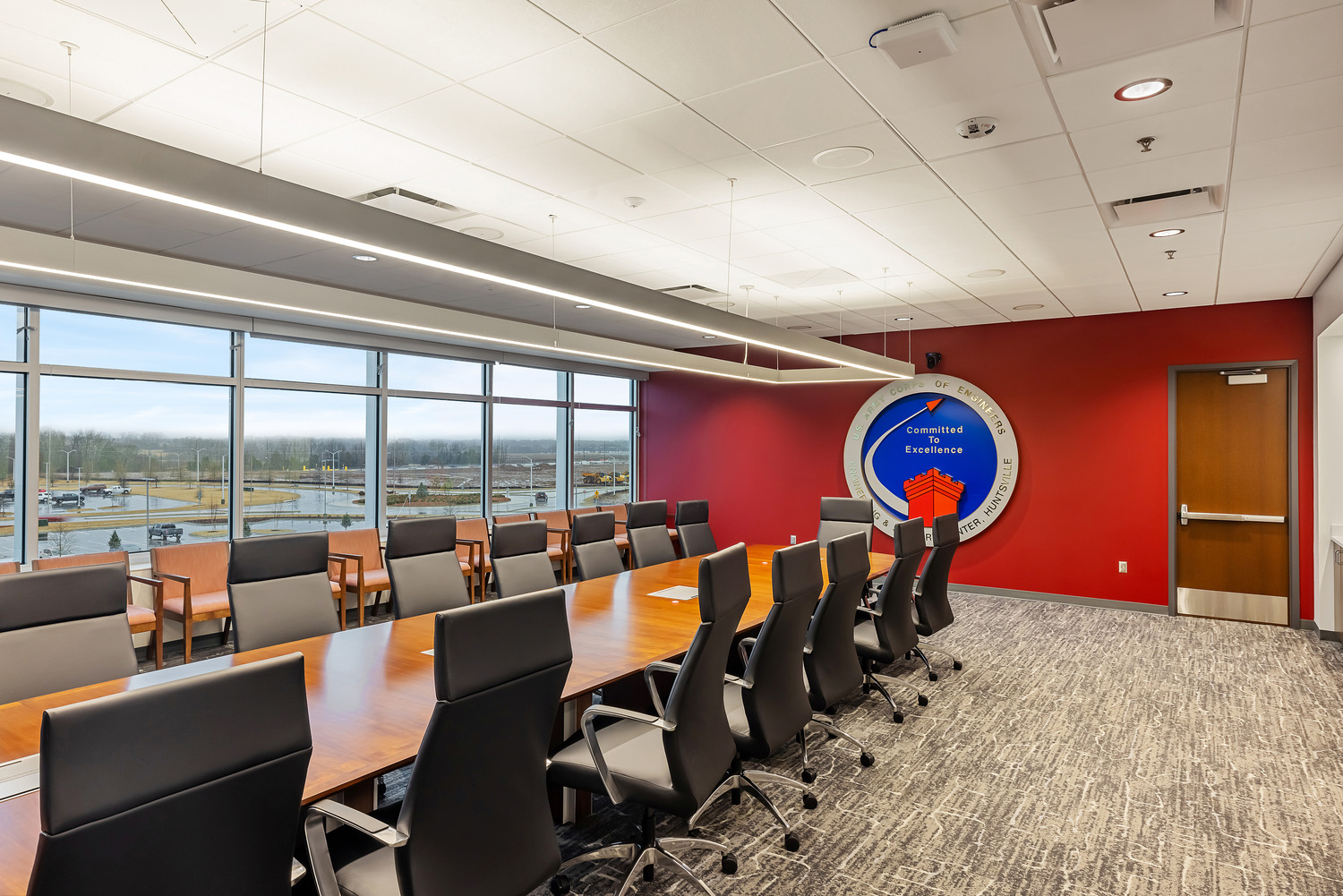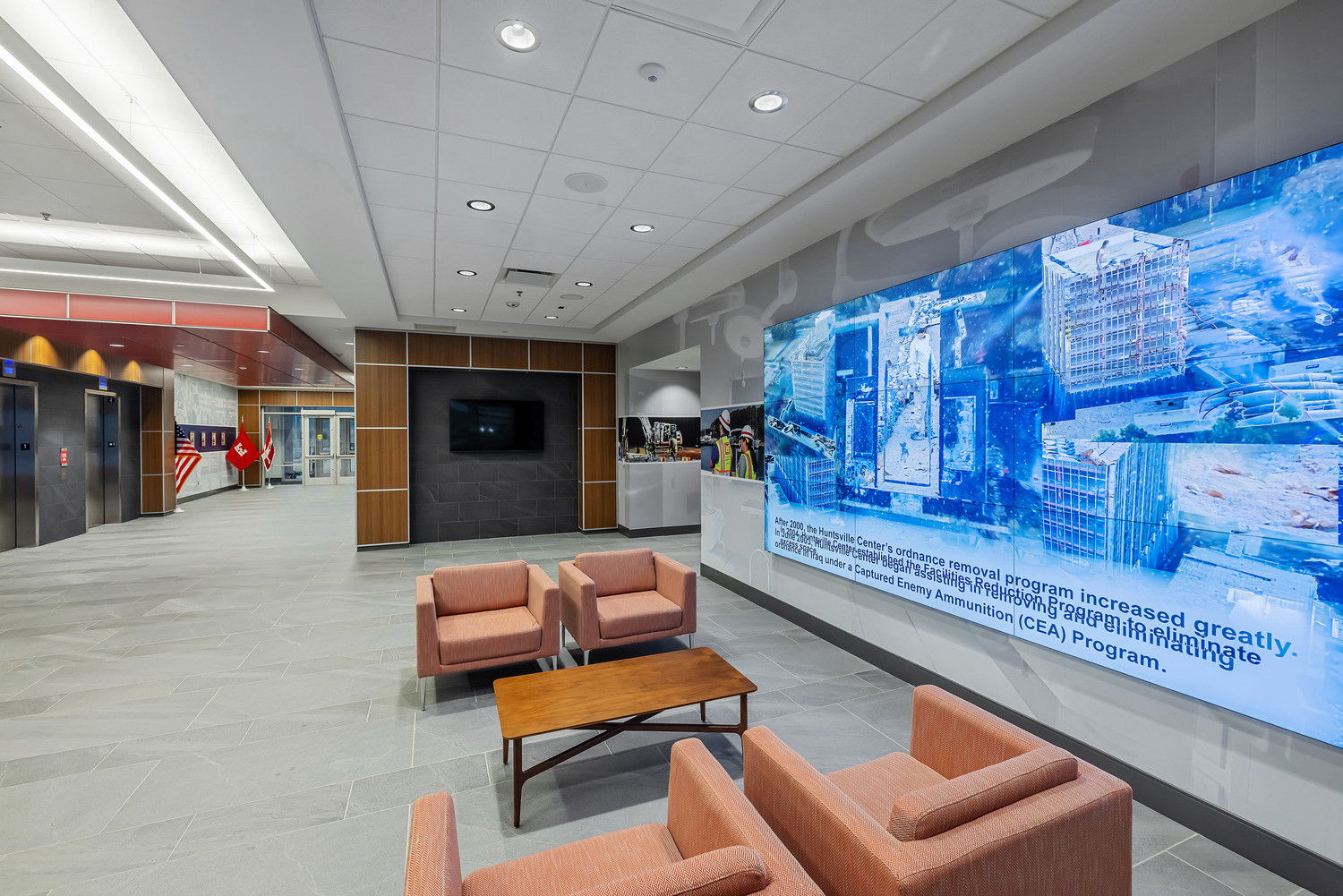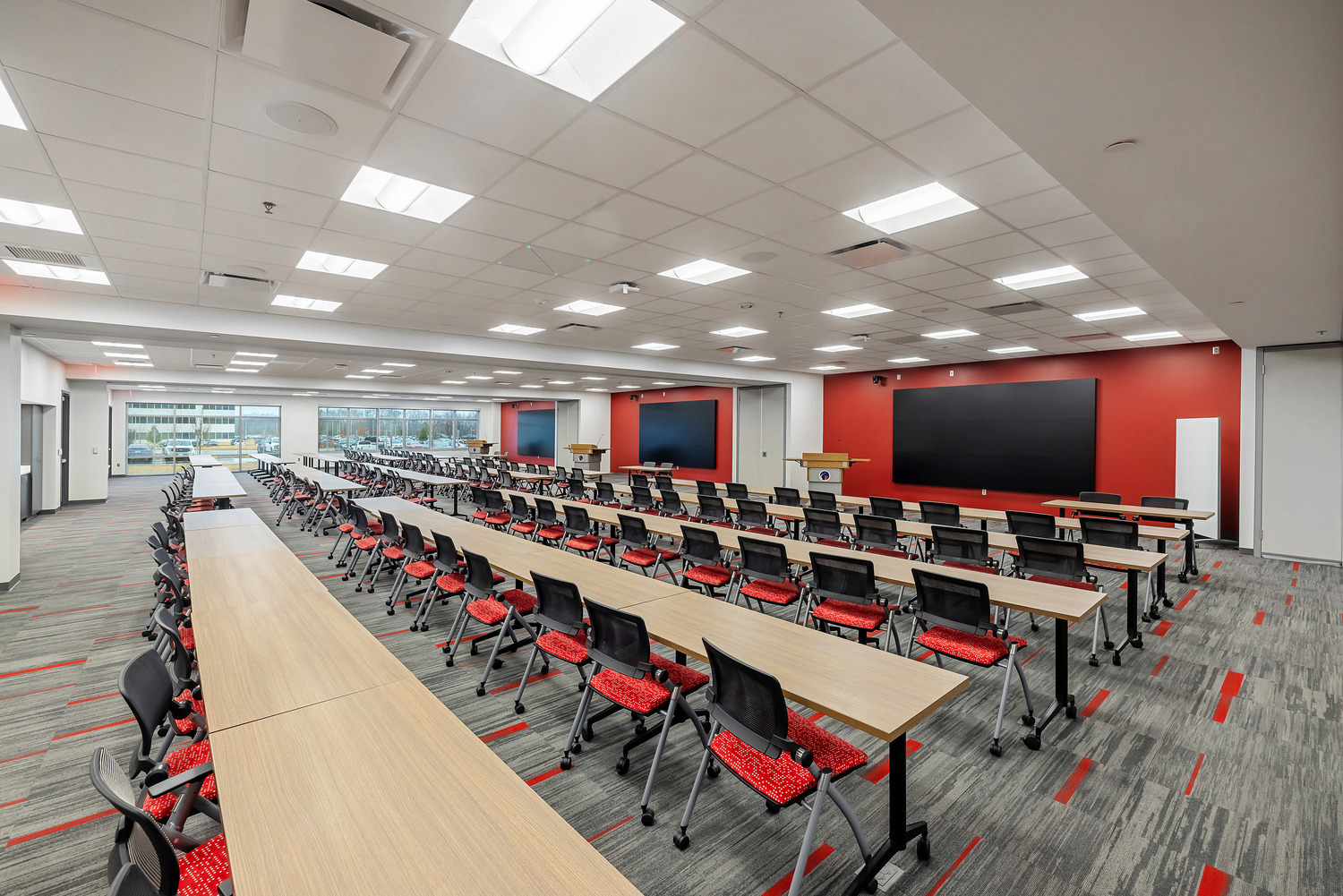Earlier this month, the U.S. Army Engineering and Support Center, on Redstone Arsenal in Huntsville, Ala., opened, enabling the Army Corps of Engineers’ Huntsville Center to consolidate its workforce into one building.
The three-story Redstone Gateway 300 building, which broke ground on Nov. 5, 2021, features 200,000 sf of Class A office space and 15,000 sf of warehouse space that was constructed with concrete tilt-up wall panels. The facility combines private and open office areas, collaborative spaces, a large training room, a dining area, and fitness center, and conference room for the Corps’ commander.
The project represents the fifth multi-story tilt-wall building constructed by Robins & Morton in the office park since 2020. The project is pursuing LEED certification. Robins & Morton, which is based in Birmingham, Ala, was the general contractor, and Nola| Van Peursem Architects, also Alabama-based, was the project architect. COPT Defense Properties was the developer. Last November, Sentar Inc., a woman-owned small business specializing in advanced cyber-intelligence solutions and technology, was awarded a contract for the Center’s PAX Functional Services and Support in such areas as customer training and quality assurance.
Huntsville Center focuses on construction management

The 468-acre Redstone Gateway, with more than 2.3 million sf of mixed-use space either built or under construction, is a joint venture development between COPT Defense Properties and Jim Wilson & Associates. The construction cost for the new Huntsville Center was not disclosed.
Huntsville Center’s origins date back to 1967, as Huntsville Division, whose first offices were in a converted textile mill. The Division has relocated several times since, the latest being into a facility at Thornton Research park in 2018.

The new building allows the Center to consolidate its off-post leases, the Center’s workforce, and provides a more secure environment for the Center’s staff.
According to the Corps’ website, the Huntsville Center’s mission and functions are centered on four key processes: program and project management, engineering and technical services, construction management, and innovative contracting initiatives. The Corps executes more than 3,000 projects annually.
Related Stories
| Jun 11, 2014
5 ways Herman Miller's new office concept rethinks the traditional workplace
Today's technologies allow us to work anywhere. So why come to an office at all? Herman Miller has an answer.
| Jun 11, 2014
Koolhaas’ OMA teams with chemical company to study link between color and economy
Dutch company AkzoNobel is partnering with Rem Koolhaas' firm OMA to study how the application of colorful paints and coatings can affect a city's economic development.
| Jun 9, 2014
Green Building Initiative launches Green Globes for Sustainable Interiors program
The new program focuses exclusively on the sustainable design and construction of interior spaces in nonresidential buildings and can be pursued by both building owners and individual lessees of commercial spaces.
Smart Buildings | Jun 8, 2014
Big Data: How one city took control of its facility assets with data
Over the past few years, Buffalo has developed a cutting-edge facility management program to ensure it's utilizing its facilities and operations as efficiently, effectively, and sustainably as possible.
| Jun 2, 2014
Parking structures group launches LEED-type program for parking garages
The Green Parking Council, an affiliate of the International Parking Institute, has launched the Green Garage Certification program, the parking industry equivalent of LEED certification.
| May 29, 2014
7 cost-effective ways to make U.S. infrastructure more resilient
Moving critical elements to higher ground and designing for longer lifespans are just some of the ways cities and governments can make infrastructure more resilient to natural disasters and climate change, writes Richard Cavallaro, President of Skanska USA Civil.
| May 27, 2014
America's oldest federal public housing development gets a facelift
First opened in 1940, South Boston's Old Colony housing project had become a symbol of poor housing conditions. Now the revamped neighborhood serves as a national model for sustainable, affordable multifamily design.
| May 23, 2014
Top interior design trends: Gensler, HOK, FXFOWLE, Mancini Duffy weigh in
Tech-friendly furniture, “live walls,” sit-stand desks, and circadian lighting are among the emerging trends identified by leading interior designers.
| May 22, 2014
7 ways it pays to use BIM for data centers
Here’s where AEC firms and owners are getting the most bang for the buck when using BIM/VDC to coordinate data center projects.
| May 22, 2014
Big Data meets data centers – What the coming DCIM boom means to owners and Building Teams
The demand for sophisticated facility monitoring solutions has spurred a new market segment—data center infrastructure management (DCIM)—that is likely to impact the way data center projects are planned, designed, built, and operated.















